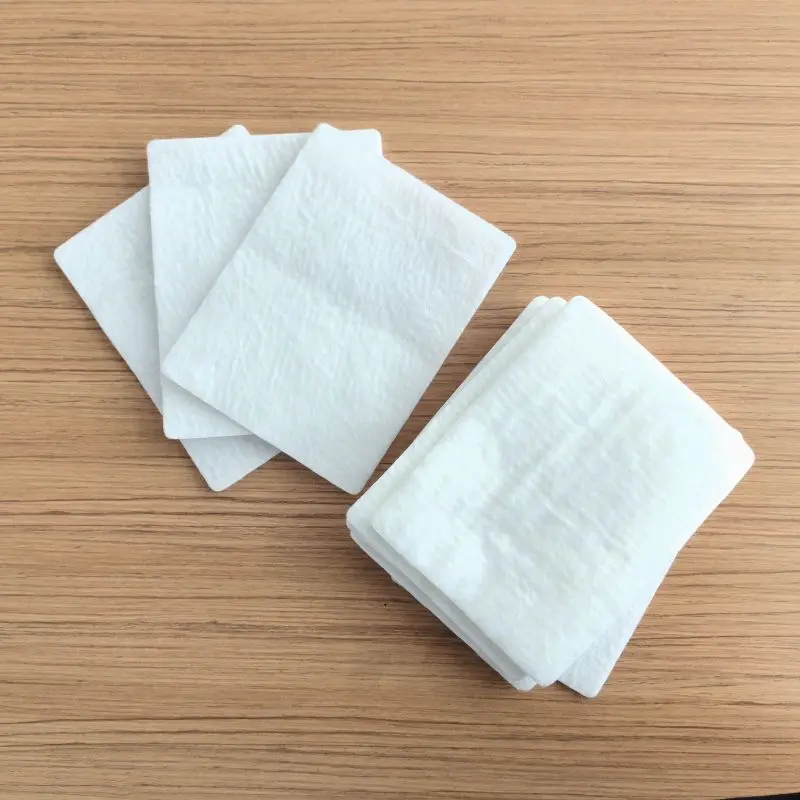![]() 300g PET geotextiles test report.pdf
300g PET geotextiles test report.pdf
Non Woven Geotextile road Fabric
Non-Woven Geotextile Road Fabric is an advanced geotechnical material designed specifically for road construction applications, offering an array of benefits and functionalities that enhance the durability, stability, and longevity of roads. This specialized fabric serves as a critical component in road engineering, providing effective solutions for various challenges encountered in construction and maintenance.
Features and Benefits:
High Filtration and Drainage: The non-woven structure allows efficient water flow while preventing soil migration, ensuring superior drainage performance. This feature prevents water buildup beneath the road surface, reducing the risk of erosion and maintaining soil stability.
Separation and Reinforcement: It acts as a barrier between different soil layers, preventing mixing and maintaining the integrity of structural components. This separation feature enhances the road's load-bearing capacity and structural stability.
Erosion Control: The fabric's durable design effectively controls soil erosion caused by water runoff, preserving the road's structure and preventing damage due to weather elements.
Environmental Compatibility: Non-Woven Geotextile Road Fabric is environmentally friendly, ensuring compatibility with the surrounding ecosystem while providing long-term engineering solutions.
Versatility and Adaptability: It can be easily tailored to specific project requirements, adapting to various soil compositions and construction methods, making it suitable for a wide range of road construction applications.
Non-Woven Geotextile Road Fabric is a versatile, durable, and efficient solution for addressing various challenges encountered in road construction and maintenance. Its unique properties make it an indispensable material for enhancing road performance, ensuring long-term stability, and reducing maintenance costs. As a critical component in modern road engineering, this fabric significantly contributes to the longevity and reliability of road infrastructure.
Material Durability and Strength
Geosynthetics Road Construction Fabric, a Non-Woven Geotextile, boasts exceptional durability and strength, making it a cornerstone in modern construction practices. Its robust composition allows it to withstand varying environmental conditions, ensuring stability in road construction projects.
Enhanced Soil Stabilization
The geotextile fabric plays a pivotal role in enhancing soil stabilization. When applied as a separating layer between different soil types or as a reinforcement within the soil structure, it effectively minimizes soil erosion and increases load-bearing capacity, leading to improved overall stability of the roadbed.
Optimized Drainage and Filtration
One of its key advantages lies in its ability to facilitate superior drainage and filtration. The non-woven structure of the geotextile fabric permits efficient water flow while preventing the loss of fine particles. This functionality ensures proper water drainage, reducing the risk of water accumulation and maintaining the integrity of the road construction.
Versatile Applications
Geosynthetics Road Construction Fabric finds versatile applications beyond road construction. It is extensively used in embankments, retaining walls, and erosion control measures due to its adaptability and reliability in providing long-term solutions across various construction projects.
Production indicators
When producing Non Woven Geotextile road Fabric for Soil Filter Membrane, several critical indicators need to be considered to ensure the quality and performance of the product. Here are some key parameters:
Unit Weight: Appropriate weight is crucial to ensure the fabric's strength and filtration performance. Choosing the suitable unit weight is essential based on the application requirements.
Thickness: The thickness of the geotextile affects its separation, filtration, and reinforcement functions. Appropriate thickness enhances the product's performance.
Width and Length: Accurate width and length during production are essential to meet various project requirements and can be customized according to specific project needs.
Tensile Strength and Elongation at Break: These parameters impact the fabric's strength and elasticity, influencing its durability and reliability in engineering projects.
CBR (California Bearing Ratio) Puncture Strength: Evaluates the fabric's puncture resistance, especially crucial in road construction projects.
Sieve Size and Vertical Permeability Coefficient: These aspects relate to filtration and drainage capacities, which are critical for soil filter membrane applications.
Tear Strength: Evaluates the fabric's tear resistance under stress, directly related to its engineering use.
Environmental Compatibility and Certifications: The product should adhere to environmental standards and possess relevant certifications to ensure sustainability and safety.
During the production of Non Woven Geotextile road Fabric for Soil Filter Membrane, it is essential to accurately monitor and ensure compliance with these critical indicators to guarantee the final product's quality, stability, and performance requirements for specific engineering applications.
Manufacturing Standards
The manufacturing standards for Non Woven Geotextile Road Fabric for Soil Filter Membrane typically depend on various regional and national specifications, industry standards, and application requirements. Generally, here are some common manufacturing standards and specifications applicable to such geotechnical materials:
ASTM International Standards: The American Society for Testing and Materials (ASTM) establishes numerous standards for geotechnical materials, such as ASTM D standards for non-woven geotextiles. These cover test methods and requirements for material properties, chemical characteristics, dimensions, and quality.
EN European Standards: The European Committee for Standardization (CEN) sets a range of standards for geotechnical materials, including EN 13249 and EN 13250, specifying performance requirements and test methods applicable to the production of non-woven geotextiles and soil filter membranes.
ISO International Standards: The International Organization for Standardization (ISO) issues standards for various geotechnical materials, such as ISO 10318, encompassing classification, performance requirements, and testing methods.
Local Standards and Industry Specifications: In some countries or regions, specific industry associations or local governments may publish standards for geotechnical materials. These standards might be more specific and suitable for local engineering requirements and regulatory needs.
These standards typically cover testing methods and requirements for physical properties, chemical characteristics, dimensions, durability, etc., ensuring that manufactured non-woven geotextile road fabric complies with quality standards and meets the engineering specifications for usage. The specific selection of standards often depends on regional regulations, engineering design requirements, and customer preferences.
273.webp)
360.webp)
630.webp)
226.webp)
503.webp)
759.webp)

597.webp)
411.webp)